PBR Shaders: Revolutionizing Minecraft with Physically Based Rendering
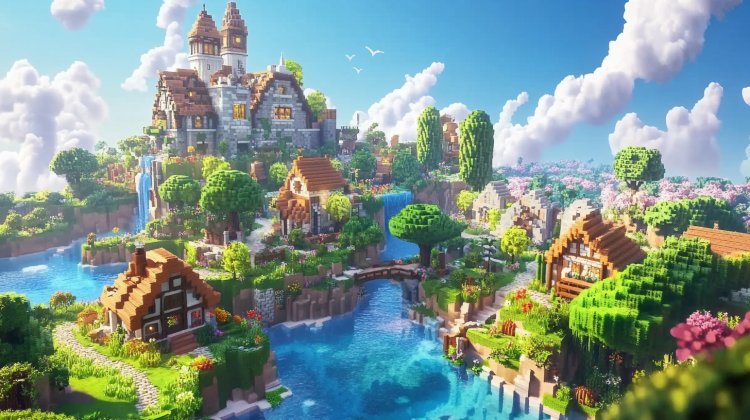
Introduction
Minecraft, with its iconic blocky aesthetic, has become a global phenomenon, beloved for its simplicity and endless creative possibilities. However, as players continue to push the boundaries of what Minecraft can offer, shaders have emerged as a key tool in enhancing the game’s visuals. Among the most significant advancements in this area is the introduction of PBR (Physically Based Rendering) shaders. These shaders bring a level of realism and detail that transforms Minecraft from a charmingly simple game into a visually stunning experience. In this article, we'll dive deep into what PBR shaders are, how they work, their installation process, key features, and why they have become a game-changer for Minecraft enthusiasts.
What Are PBR Shaders?
PBR shaders refer to a set of rendering techniques used to achieve more realistic and consistent results in 3D graphics. Unlike traditional shaders that rely on simpler lighting models, PBR shaders simulate the physical properties of materials to create more accurate and lifelike visuals. This approach takes into account how light interacts with different surfaces, including reflection, refraction, and scattering, to produce textures that behave realistically under various lighting conditions.
In the context of Minecraft, PBR shaders elevate the game’s visuals by introducing materials that respond to light in a way that mimics real-world physics. This means that surfaces like wood, metal, stone, and water will not only look more detailed but also behave as they would in reality, with proper reflections, shadows, and textures.
The Science Behind Physically Based Rendering
Physically Based Rendering (PBR) is a technique that simulates the way light interacts with surfaces based on their physical properties. In PBR, materials are defined by attributes such as albedo (color), roughness, metallicity, and normal maps, all of which influence how light is reflected or absorbed.
-
Albedo: The base color of a material without any lighting effects. It represents the inherent color of the surface.
-
Roughness: Determines how rough or smooth a surface is. A high roughness value leads to diffuse reflections, making the surface appear matte, while a low roughness value results in sharp, glossy reflections.
-
Metallicity: Defines whether a surface behaves like a metal. Metallic surfaces reflect light in a specific way, contributing to their shiny appearance.
-
Normal Maps: These are textures that add depth to a surface by simulating small surface details like bumps and grooves, without the need for additional geometry.
By combining these attributes, PBR shaders create materials that respond to light realistically, making them appear more tangible and lifelike in the game environment.
How PBR Shaders Transform Minecraft
PBR shaders have a profound impact on Minecraft’s visuals, enhancing everything from simple blocks to complex structures. Here’s how PBR shaders transform the game:
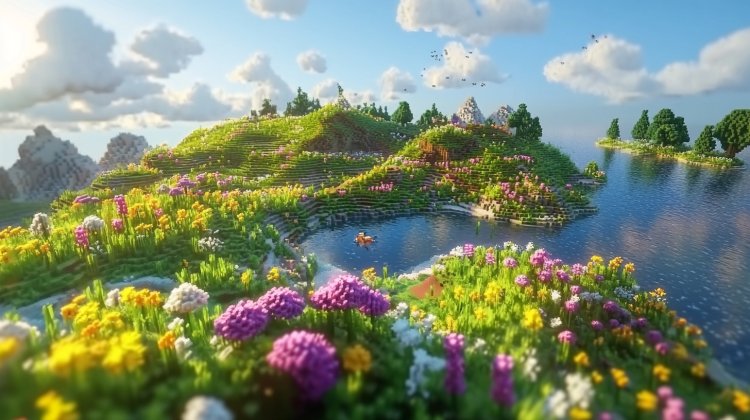
1. Enhanced Material Realism
With PBR shaders, materials in Minecraft no longer appear as flat, uniform textures. Instead, they exhibit properties that make them look and feel more realistic. For example, a block of wood will display a natural grain pattern, with light interacting differently across its surface. Metal blocks will reflect their surroundings with varying intensity, depending on their roughness and metallicity. This level of detail makes even the simplest structures feel more immersive and grounded in reality.
2. Dynamic Lighting and Shadows
PBR shaders take full advantage of Minecraft’s lighting engine, creating dynamic lighting and shadow effects that add depth and dimension to the game world. Light sources such as the sun, torches, and lanterns cast realistic shadows that shift with the time of day and the position of the light source. Reflections and refractions also behave more naturally, especially on surfaces like water or glass, further enhancing the visual fidelity.
3. Improved Texture Depth
Textures in Minecraft often appear flat due to the game’s low-resolution art style. However, PBR shaders use normal maps and height maps to simulate surface details, adding depth and complexity to textures. This results in surfaces that look more three-dimensional, even if they are made up of simple blocks. For example, stone bricks might show cracks and uneven surfaces, while leaves on trees may appear to have veins and subtle variations in thickness.
4. Realistic Environmental Effects
PBR shaders introduce environmental effects that make the game world feel more alive. Rain, for instance, will create wet surfaces that reflect light differently, while snow might accumulate in a way that looks more natural. Fog, mist, and atmospheric scattering add layers of realism, making landscapes appear more distant or creating moodier environments in specific biomes.
Installation and Setup
Installing PBR shaders in Minecraft is a straightforward process, but it requires some preparation to ensure your system can handle the enhanced graphics.
Prerequisites
-
Powerful Hardware: PBR shaders are demanding, so a powerful GPU (like NVIDIA RTX series or AMD Radeon RX series) and a multi-core CPU are recommended for smooth performance.
-
OptiFine or Shader Loader: You’ll need a shader loader like OptiFine to install and run PBR shaders in Minecraft. OptiFine optimizes the game and provides support for advanced shaders.
-
Minecraft Version: Ensure you’re using a Minecraft version that is compatible with PBR shaders. Both Java and Bedrock editions support PBR, but the setup process may differ slightly.
Step-by-Step Installation
Step 1: Install OptiFine
- Download OptiFine: Visit the OptiFine website and download the version compatible with your Minecraft version.
- Run the Installer: Open the downloaded file and click “Install.” OptiFine will automatically integrate with your Minecraft installation.
- Launch Minecraft: Select the OptiFine profile in the Minecraft Launcher and start the game to ensure everything is working properly.

Step 2: Download PBR Shaders
- Find a Reliable Source: Download PBR shaders from trusted Minecraft modding sites or the creator’s official page to avoid potential issues.
- Download the Shader Pack: Make sure to download the version that matches your Minecraft edition.
Step 3: Install the Shader Pack
- Locate the Shaders Folder:
- Open Minecraft with OptiFine.
- Navigate to “Options” > “Video Settings” > “Shaders” > “Shaders Folder.”
- Add the Shader Pack: Move the downloaded PBR shader file into the shaders folder.
- Activate the Shader: Back in the shader settings, select the PBR shader from the list to apply it.
Step 4: Configure Settings
- Adjust Shader Settings: Depending on your system, you may need to tweak settings to balance performance and visual quality.
- Optimize Performance: If you encounter performance issues, lower settings such as render distance, shadow quality, or disable specific effects.
-
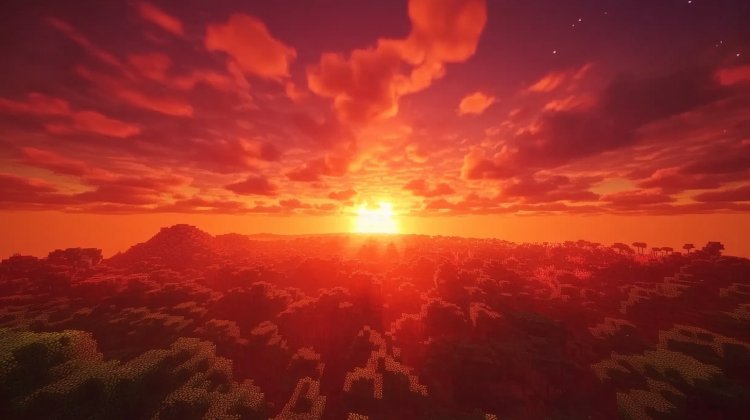
Key Features of PBR Shaders
PBR shaders bring a wealth of features that dramatically enhance Minecraft’s visual experience. Here are some of the standout elements:
1. Physically Accurate Materials
PBR shaders create materials that respond to light in a way that mimics real-world physics. This means that every surface in Minecraft, from stone to glass, behaves according to its physical properties. For example:
- Metallic Surfaces: Reflect light sharply and show mirror-like reflections.
- Rough Surfaces: Scatter light, creating soft, diffuse reflections.
- Transparent Materials: Accurately refract light, creating realistic effects in glass and water.
2. Advanced Lighting and Shadows
PBR shaders enhance lighting in Minecraft, making it more dynamic and realistic. Light sources now cast shadows that change based on their intensity and position, and ambient light behaves more naturally, creating smoother transitions between light and shadow.
3. Detailed Normal and Height Mapping
These shaders use normal and height maps to add depth to flat textures. This means surfaces like cobblestone, wood planks, and bricks now have visible bumps, grooves, and indentations that catch light in realistic ways, making them look more three-dimensional.
4. Realistic Reflections and Refractions
Reflections and refractions are a major component of PBR shaders. Water bodies, glass panes, and other reflective surfaces now mirror their surroundings with greater accuracy. Refractions, such as light bending through glass, are also simulated, adding a layer of realism to the game’s visuals.
5. Enhanced Environmental Effects
PBR shaders bring the environment to life with advanced effects:
- Weather Effects: Rain causes surfaces to appear wet, with realistic reflections and specular highlights.
- Fog and Mist: These elements add depth to distant landscapes and create mood-enhancing atmospheres.
- Volumetric Lighting: Sunbeams and light shafts are more pronounced, creating dramatic lighting effects in forests, caves, and other environments.
6. Customizable Shader Options
PBR shaders often come with a variety of settings that allow players to customize their experience. This includes adjusting the intensity of effects, enabling or disabling specific features, and tweaking performance options to match their hardware capabilities.
Performance Considerations
While PBR shaders offer a stunning visual upgrade, they are more demanding on hardware than traditional shaders. Here are some tips to ensure a smooth experience:
1. Hardware Requirements
- GPU: A powerful GPU is essential. The NVIDIA RTX series or AMD Radeon RX series are ideal for handling the complex calculations involved in PBR rendering.
- CPU: A multi-core CPU will help manage the increased load from advanced shaders.
- RAM: Allocate at least 8GB of RAM to Minecraft to ensure smooth performance.
2. Optimization Tips
- Adjust Settings: Start with the default settings and then tweak as needed to find a balance between performance and visual quality.
- Update Drivers: Ensure your GPU drivers are up to date for maximum compatibility and performance.
- Close Background Applications: Free up system resources by closing unnecessary programs before launching Minecraft.
- Use Performance Mods: Consider using performance-enhancing mods like Sodium or Lithium alongside OptiFine to further optimize your gameplay.
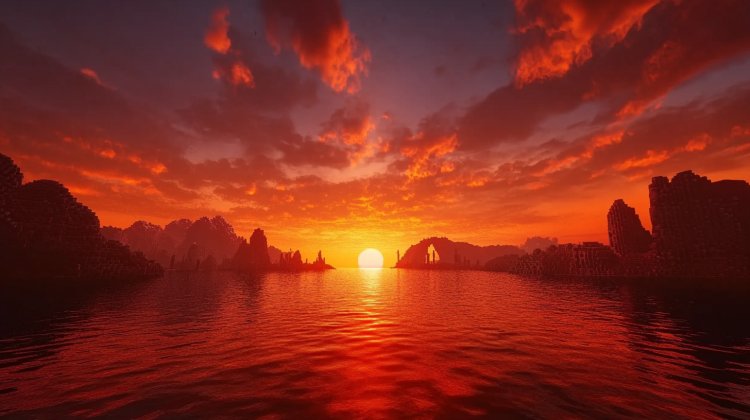
Creative Uses for PBR Shaders
PBR shaders open up new creative possibilities for Minecraft players, builders, and content creators. Here’s how they can be used creatively:
1. Architectural Projects
Builders can take advantage of PBR shaders to create highly detailed and realistic structures. The ability to simulate real-world materials allows for more intricate and visually appealing designs, from modern skyscrapers with reflective glass to ancient temples with weathered stone.
2. Cinematic Content Creation
Content creators can use PBR shaders to produce cinematic videos with high production value. The realistic lighting, shadows, and reflections add a professional touch to gameplay footage, machinima, and storytelling projects.
3. Immersive Adventure Maps
Map designers can craft more immersive and visually engaging adventure maps using PBR shaders. The enhanced materials and environmental effects help set the tone and atmosphere for different settings, making exploration more rewarding.
4. Realistic Survival Experiences
For players who enjoy survival mode, PBR shaders add an extra layer of immersion. The realistic visuals make environments feel more threatening, especially in harsh biomes like deserts or snowy tundras, where the shaders can simulate extreme weather conditions.
Community Feedback and Reception
PBR shaders have been well-received by the Minecraft community, with players praising the shaders for their ability to transform the game’s visuals. Key points of feedback include:
- Visual Quality: Players appreciate the significant improvements in texture realism and lighting.
- Immersion: Many users report feeling more immersed in the game world due to the realistic materials and environmental effects.
- Customizability: The ability to tweak settings allows players to optimize the shaders according to their hardware, making PBR shaders accessible to a broader audience.
Players frequently share screenshots and videos showcasing the beauty of PBR shaders on platforms like Reddit, Twitter, and YouTube. These posts often highlight the shaders’ ability to make even mundane Minecraft builds look stunning, attracting attention from other players and inspiring them to try out the shaders for themselves.
Comparisons with Other Shaders
PBR shaders offer a unique approach to enhancing Minecraft’s visuals, but how do they compare to other popular shader packs?
1. vs. SEUS (Sonic Ether’s Unbelievable Shaders)
SEUS is known for its realistic lighting and shadows, making it a popular choice for players seeking high-quality visuals. However, PBR shaders go a step further by focusing on material realism, simulating how different surfaces interact with light based on their physical properties. This gives PBR shaders an edge in creating more detailed and realistic environments.
2. vs. Continuum Shaders
Continuum Shaders are praised for their ultra-realistic visuals, including advanced lighting, shadows, and reflections. While Continuum excels in creating a cinematic experience, PBR shaders offer more flexibility in material customization, allowing players to create unique textures that behave realistically under different lighting conditions.
3. vs. Sildur’s Shaders
Sildur’s Shaders are known for their vibrant colors and extensive customization options, making them a popular choice for players who enjoy bright and colorful visuals. In contrast, PBR shaders focus more on realism, creating a more natural and immersive visual experience. Players who prefer a more grounded and realistic look may favor PBR shaders over Sildur’s.
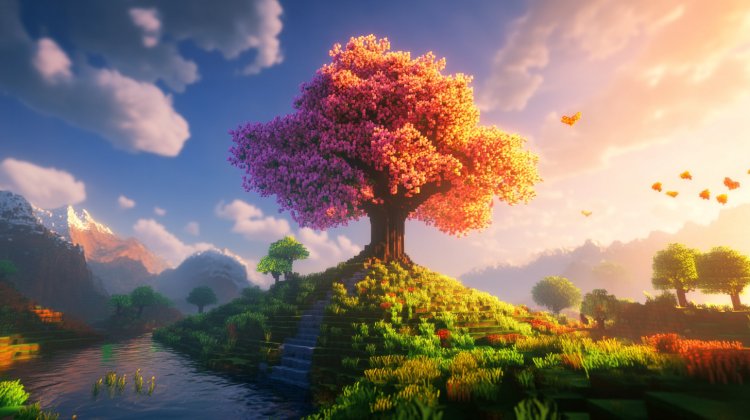
Conclusion
PBR shaders have revolutionized the way Minecraft looks and feels, offering players a level of realism that was previously unimaginable in the blocky world of Minecraft. By simulating real-world materials and enhancing lighting, shadows, and environmental effects, PBR shaders create a more immersive and visually stunning experience. Whether you’re a builder, content creator, or simply a player who enjoys exploring a beautiful world, PBR shaders are a powerful tool that can elevate your Minecraft experience to new heights.
While they do require a capable system to run smoothly, the visual rewards are well worth the investment for those seeking to push Minecraft’s graphics to their full potential. As the community continues to embrace and refine these shaders, PBR will likely remain a cornerstone of Minecraft’s ongoing visual evolution, inspiring players to explore new creative possibilities within the game.
What's Your Reaction?















![Patrix Resource Pack For 1.19 [32x→256x]](https://minecraftmodded.com/uploads/images/202210/image_750x415_6343b3ab59eff.jpg)

